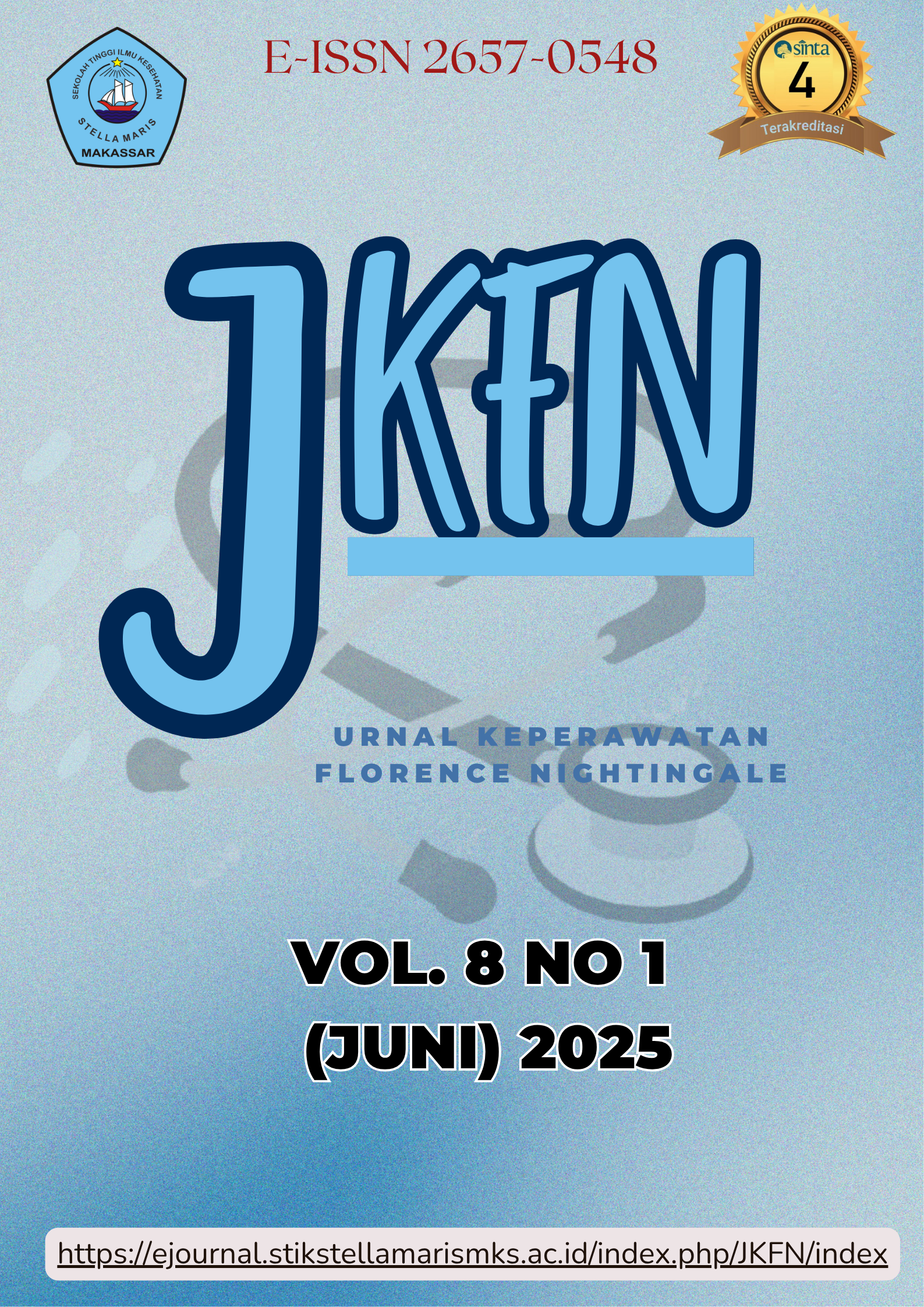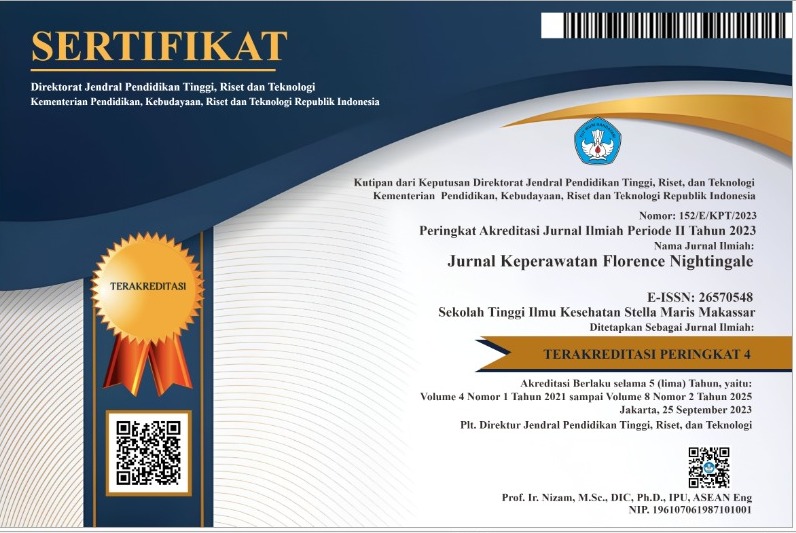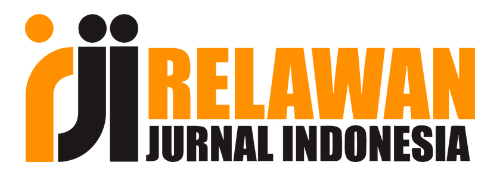Analysis of Risk Factors that Influence the Incidence of Obesity in Adolescent: A Literature Review
Keywords:
risk factor, obesity, adolescent womanAbstract
The prevalence of obesity in adolescents has significantly increased from 8% in 1990 to 20% in 2022. The World Health Organization (WHO) reports that more than 390 million children and adolescents aged 5 to 19 years are affected by obesity. This study aims to identify risk factors contributing to obesity in adolescents and is expected to help them avoid behaviors that could potentially lead to obesity. This literature review study utilizes the PRISMA guidelines and databases such as Google Scholar, Garuda, MDPI, PubMed, and ScienceDirect. Articles were searched using keywords in both Indonesian and English, such as "risk factors for adolescent obesity," "risk factor," "obesity," and "adolescent," for publications from 2021 to 2024, in accordance with predefined inclusion and exclusion criteria. Based on the review of 10 articles, it was found that risk factors influencing obesity in adolescents include genetic factors, gender, physical activity, parental income, eating habits, knowledge, and stress levels. Physical activity is the dominant factor influencing obesity in adolescents. Therefore, optimal interventions are needed to prevent obesity in adolescents, including programs to increase physical activity and family support to promote healthy eating habits.
Downloads
References
Alfionita, N., Sulistyorini, L., & Septiyono, E. A. (2023). Hubungan Sedentary Lifestyle dengan Status Gizi Remaja pada Masa Pandemi Covid-19 di SMPN 14 Jember. Pustaka Kesehatan, 11(2), 92. https://doi.org/10.19184/pk.v11i2.37128
Auliah, A. N., Nur’aeni, A. L., Hidayati, E. N., & Yusup, I. R. (2020). Hubungan pola hidup dan berat badan mahasiswa pendidikan biologi semester 7A. Jurnal Bio Educatio, 5(1), 24–29.
Azzahra, F. L., & Suryaalamsah, I. I. (2024). Hubungan Pengetahuan Gizi, Pola Makan, dan Aktivitas Fisik dengan Kejadian Status Gizi Lebih pada Remaja di Man 2 Jakarta Timur. JURNAL GIZI DAN KESEHATAN, 16(1), 53–60.
Dewi, S. R. (2013). Hubungan antara pengetahuan gizi, sikap terhadap gizi dan pola konsumsi siswa kelas XII program keahlian jasa boga di SMK Negeri 6 Yogyakarta. Universitas Negeri Yogyakarta.
Fitri, S. A., & Rusydi, R. (2023). Hubungan Kepemilikan Smartphone dan Uang Saku terhadap Obesitas pada Remaja. Media Gizi Ilmiah Indonesia, 1(2), 63–69. https://doi.org/10.62358/mgii.v1i2.16
Gaol, L. L., Manik, R. M., Sinabariba, M., & Ambarita, B. (2023). Gambaran Penngetahuan Gizi Remaja dan Kebiasaan Konsumsi Makanan Cepat Saji pada Remaja. Jurnal Ilmiah Permas: Jurnal Ilmiah STIKES Kendal, 14(1), 383–390. https://doi.org/https://doi.org/10.32583/pskm.v14i1.1532
Hanani, R., Badrah, S., & Noviasty, R. (2021). Pola Makan, Aktivitas Fisik dan Genetik Mempengaruhi Kejadian Obesitas Pada Remaja di SMK Wilayah Kerja Puskesmas Segiri. Jurnal Kesehatan Metro Sai Wawai, 14(2), 120–129. https://doi.org/10.26630/jkm.v14i2.2665
Hastuti, P. P. (2019). Genetika Obesitas. UGM PRESS.
Kamaruddin, I., Kustiyah, L., Riyad, H., & Junus, R. (2023). Factors Influencing Nutritional Status in Overweight and Obese Adolescents. Amerta Nutrition, 7(2SP), 311–319.
Kementerian Kesehatan Republik Indonesia. (2012). Pedoman Pencegahan dan Penanggulangan Kegemukan dan Obesitas pada Anak Sekolah.
Kementerian Kesehatan Republik Indonesia. (2019). Epidemi Obesitas. https://p2ptm.kemkes.go.id/uploads/N2VaaXIxZGZwWFpEL1VlRFdQQ3ZRZz09/2018/02/FactSheet_Obesitas_Kit_Informasi_Obesitas.pdf
Kim, K.-B., & Shin, Y.-A. (2020). Males with Obesity and Overweight. Journal of Obesity & Metabolic Syndrome, 29(1), 18–25. https://doi.org/10.7570/jomes20008
Lestari, D. I. (2017). Pengaruh kebiasaan merokok terhadap obesitas dan overweight pada karyawan universitas di Jakarta. Jurnal Muara Sains, Teknologi, Kedokteran Dan Ilmu Kesehatan, 1(1). https://doi.org/10.24912/jmstkik.v1i1.431
Li, H., He, W., & Liu, G. (2024). Exercise habits and health behaviors on adolescent obesity. Acta Psychologica, 245, 104199. https://doi.org/10.1016/J.ACTPSY.2024.104199
Liberali, R., Kupek, E., & Assis, M. A. A. de. (2020). Dietary Patterns and Childhood Obesity Risk: A Systematic Review. Childhood Obesity, 16(2), 70–85. https://doi.org/10.1089/chi.2019.0059
Masdar, H., Saputri, P. A., Rosdiana, D., Chandra, F., & Darmawi. (2016). Depresi, ansietas, dan stres serta hubungannya dengan obesitas pada remaja. Jurnal Gizi Klinik Indonesia, 12(4), 138–143.
Misnadiarly. (2007). Obesitas sebagai Faktor Risiko beberapa Penyakit. Penerbit Yayasan Obor Indonesia.
Nasution, L. K., Siagian, A., & Lubis, R. (2018). Hubungan Obesitas Terhadap Kejadian Diabetes Melitus Tipe 2 Pada Wanita Usia Subur Di Wilayah Kerja Puskesmas Pintupadang. Jurnal Muara Sains, Teknologi, Kesehatan, Dan Ilmu Kesehatan, 2(1), 240–246.
NHLBI. (2022). Overweight and Obesity - What Are Overweight and Obesity? | NHLBI, NIH. https://www.nhlbi.nih.gov/health/overweight-and-obesity
Park, E., & Ko, Y. (2022). Trends in Obesity and Obesity-Related Risk Factors among Adolescents in Korea from 2009 to 2019. International Journal of Environmental Research and Public Health, 19(9), 5672. https://doi.org/10.3390/ijerph19095672
Paseru, L. V., Kasmini, O. W., & Rustiana, E. R. (2021). The Effect of Allowance and Fast-Food Consumption on the Obesity of Adolescents in Badung Regency, Bali. Public Health Perspectives Journal, 6(1), 75–82.
Riany, pipiet, Ahmad, A., & Ismail, N. (2023). Faktor Risiko Obesitas Pada Remaja: Studi Case- Control. NASUWAKES: Jurnal Kesehatan Ilmiah, 14(1), 80–86.
Saidah, F., Maryanto, S., & Pontang, G. S. (2017). Hubungan Kebisasaan Konsumsi Minuman Berpemanis dengan Kejadian Gizi Lebih pada Remaja di SMA Institut Indonesia Semarang. Jurnal Gizi dan Kesehatan. Jurnal Gizi dan Kesehatan, 9(22), 150-157.
Salsa, D. Y., Dinengsih, S., & Syamsiah, S. (2024). Analysis Of Factors Associated With The Incidence Of Obesity In Adolescents. JKM (Jurnal Kebidanan Malahayati), 10(4), 305–314. https://doi.org/10.33024/jkm.v10i4.14337
Saprudin, A., Amalia, I. S., & Ropii, A. (2023). Analisis faktor determinan kejadian obesitas pada remaja di Kabupaten Kuningan. Journal of Public Health Innovation, 4(01), 51–58. https://doi.org/10.34305/jphi.v4i01.961
Sembiring, B. A., Rosdewi, N. N., & Yuningrum, H. (2022). Hubungan Aktivitas Fisik dengan Kejadian Obesitas pada Remaja di SMA Swasta Cerdas Bangsa, Kecamatan Deli Tua, Kabupaten Deli Serdang, Medan. Jurnal Formil (Forum Ilmiah) Kesmas Respati, 7(1), 87–95. https://doi.org/10.35842/formil.v7i1.421
Shuvo, S. Das, & Biswas, B. K. (2023). The degree of association between overweight and obesity with the use of electronic media among Bangladeshi adolescents. PLOS ONE, 18(1), e0280544. https://doi.org/10.1371/journal.pone.0280544
Sineke, J., Kawulusan, M., Purba, R. B., & Dolang, A. (2019). Hubungan tingkat pengetahuan gizi dan pola makan dengan kejadian obesitas pada siswa SMK Negeri 1 Biaro. Jurnal Gizido, 11(01), 28-35.
Sisson, S. B., Krampe, M., Anundson, K., & Castle, S. (2016). Obesity prevention and obesogenic behavior interventions in child care: A systematic review. Preventive Medicine, 87, 57–69. https://doi.org/10.1016/j.ypmed.2016.02.016
Suha, G. R., & Rosyada, A. (2022). Faktor-faktor yang berhubungan dengan kejadian obesitas pada remaja umur 13–15 tahun di Indonesia (analisis lanjut data Riskesdas 2018). Ilmu Gizi Indonesia, 06(01), 43–56.
UNICEF. (2022). Analisis Lanskap Kelebihan Berat Badan dan Obesitas di Indonesia.
Vadera, B., Yadav, S., Yadav, B., Parmar, D., & Unadkat, S. (2010). Study on obesity and Influence of dietary factors on the weight status of an adult population in Jamnagar city of Gujarat: A cross-sectional analytical study. Indian Journal of Community Medicine, 35(4), 482. https://doi.org/10.4103/0970-0218.74346
World Health Organization. (2022). Physical Activity. WHO. https://www.who.int/news-room/fact-sheets/detail/physical-activity
World Health Organization. (2024, March 1). Obesity and overweight. https://www.who.int/news-room/fact-sheets/detail/obesity-and-overweight
Zhu, J., Tan, Y., Lu, W., He, Y., & Yu, Z. (2021). Current Assessment of Weight, Dietary and Physical Activity Behaviors among Middle and High School Students in Shanghai, China—A 2019 Cross-Sectional Study. Nutrients, 13(12), 4331. https://doi.org/10.3390/nu13124331
Published
How to Cite
Issue
Section
Copyright (c) 2025 Amani Shofi Karimah, Zaskia Reihan Amanda Niarto, Dinda Annisa Putri Lesmana, Ahlam Faris, Chahya Kharin Herbawani (Author)

This work is licensed under a Creative Commons Attribution-ShareAlike 4.0 International License.









